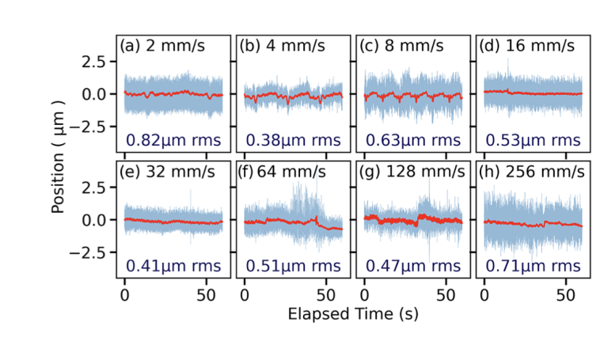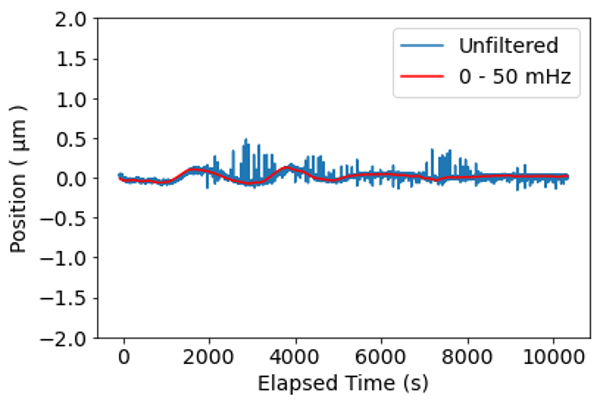Advancements in high-repetition-rate laser technology are paving the way for commercialisation of laser-driven proton accelerators by producing MeV proton beams with much higher average power than previously possible. While current state-of-the-art laser systems can produce bunches of protons at up to 10 Hz, future laser systems are expected to achieve rates of 100 Hz and beyond. However, exploiting this breakthrough in laser technology also presents new challenges for laser-driven proton accelerators, in particular, precisely replenishing the target foils which are the source of the protons and are destroyed during the acceleration process. These high-repetition-rate laser systems generate pulses with less than 1 J of energy per pulse, and therefore require a final laser focusing optic which can 'tightly' focus the laser energy (f-number < 3) to achieve the 'relativistic intensities' required for proton acceleration. This tight focusing concentrates the laser energy within a diffraction-limited focal spot radius of 1.5 μm but is also associated with a very short Rayleigh range, the distance from focus at which the laser intensity will have halved from its peak value, of only 18 μm for a central wavelength of 800 nm and this necessitates very precise positioning of the target. To achieve optimal results, tape-drive targets must be able to spool at linear speeds faster than 1 m/s while maintaining better than 5 μm positional jitter. While the development of a high-stability target presents significant challenges, the potential benefit of high-frequency MeV proton beams for addressing scientific questions, and within industrial and medical applications, making this a justified endeavour.
A collaboration involving the John Adams Institute at Imperial College London and Centre for Light-Matter Interactions at Queen's University Belfast was developed and demonstrated a highly stable high-repetition-rate tape target delivery system for laser driven accelerators in order to address these challenges. The design, development and experimental application of these targets demonstrating stable proton beam generation are published in High Power Laser Science and Engineering, Volume 11, Issue 2 (N. Xu, M. J. V. Streeter, O. C. Ettlinger, H. Ahmed, S. Astbury, M. Borghesi, N. Bourgeois, C. B. Curry, S. J. D. Dann, N. P. Dover, T. Dzelzainis, V. Istokskaia, M. Gauthier, L. Giuffrida, G. D. Glenn, S. H. Glenzer, R. J. Gray, J. S. Green, G. S. Hicks, C. Hyland, M. King, B. Loughran, D. Margarone, O. McCusker, P. McKenna, C. Parisuaña, P. Parsons, C. Spindloe, D. R. Symes, F. Treffert, C. A. J. Palmer, Z. Najmudin. Versatile tape-drive target for high-repetition-rate laser-driven proton acceleration[J]. High Power Laser Science and Engineering, 2023, 11(2): 02000e23).
The high-stability tape-drive target, able to support varying tape materials and thicknesses, was developed with structural rigidity and modal response in mind. The target was characterised using high speed confocal white light distance measuring method for use in laser-driven accelerators at repetition rates of up to 100 Hz. The tape surface position is stable on the sub-micrometre scale, which is compatible with the current multi-Hz and near-future higher repetition-rate lasers (>kHz). Furthermore, the target has been characterized for long-term drift at 100 Hz, demonstrating its suitability for operation over extended periods as required for applications within industry and medicine.
This new development is expected to have significant implications for scientific research and applications, as it enables the generation and study of high average power, MeV-energy proton beams. The high stability and suitability for long-term operation of this tape-drive target represents a crucial area of development in adapting the standard experimental methodology for laser-driven proton acceleration to maximise the opportunity presented by the new generation of 100 Hz high-power lasers, and is an essential step towards exploitation of these sources for industrial applications. In a recent experiment at Rutherford Appleton Laboratory, the target was continuously operated at up to 5 Hz for 70,000 shots without intervention by the experimental team, except for tape replacement. This produced the largest data-set of relativistically intense laser–solid foil measurements to-date. This has enabled quantification of shot-to-shot fluctuations in proton beam parameters and mapping of the multi-dimensional dependence of the proton beam which provides both crucial insights into the underlying physics of the acceleration process and enhances our understanding of laser-driven proton acceleration. The advances are significant for improving the efficiency and reliability of proton sources and exploring novel applications in various fields. For example, laser-driven proton sources could revolutionize cancer therapy by delivering proton beams with a high-dose rate (> 40Gy/s) for exploring FLASH radiobiology, which is currently a key topic within cancer therapy research. However, in order to develop new therapies and understand the impact of different controls on cell survival rates, radiobiologists require easy access to a stable source of high dose rate protons. This could be offered by a small-scale laser-driven proton accelerator.
Future developments of this tape-drive target include utilisation for fast PID (proportional–integral–derivative) controller loops combined with encoders to achieve precision and rapid torque and position changes, as well as achieving better positional repeatability with rigid kinematic clamping system to maintain minimal downtime during tape changes. This enables even higher repetition rate with spatially indexed targets delivered with carrier tape. Using fast control loop also enable software defined tensioning and active notch filter vibration damping, further enhances the tape drive performance.


Figure Caption: Left: Tape positional jitter across a wide range of speeds measured using the Precitec CHRocodile over 1 minute operation. The low (< 1 Hz) frequency movement, which better represents the tape motion, is shown with the red line and the RMS variation in position of the raw data is quoted in each subplot. Right: Tape drive structural drift after 10,000 seconds of continuous running.
Comments from a member of the collaboration, Dr. Charlotte Palmer from Queen's University Belfast:
This development of a high-stability, versatile tape-drive target for laser-driven acceleration at high-repetition-rates is an impressive achievement. One of the key challenges for high-repetition rate laser-driven proton acceleration is how to replenish the ultra-thin proton source foils, which are destroyed with each laser shot. A high-repetition rate target is required to be stable over long durations, robust to radiation and electrical noise, provide good diagnostic access and allow for versatility in target materials and thicknesses. Most importantly it must allow the target to be replaced with few micron positional stability which is required to ensure the foil is placed at the laser focus and interacts with the highest laser intensity. This very precision positioning is due to the extremely tight focusing that is required to reach the interaction conditions required for laser-driven proton acceleration and becomes even more constrained for high-repetition rate lasers which typically contain less energy within the laser pulse. However, being able to exploit multi-Hz repetition-rate lasers provide laser-plasma researchers with orders of magnitude more data than previously possible. This allows us to explore the mechanisms of proton acceleration with much higher resolution, characterising source stability and mapping the complex interdependence of the proton beam on experimental variables. These are key topics that must be addressed in order to develop laser-driven proton sources for applications in research, industry and healthcare, which have been demonstrated using this tape-drive target.


